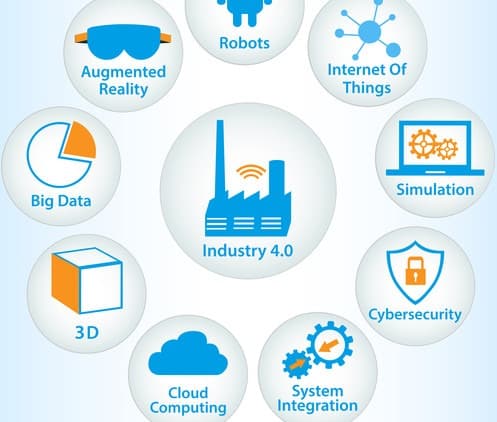Majority of manufacturers will embrace Industrial Internet of Things (IIoT) to improve quality and operational visibility.
 Zebra Technologies Corporation, a provider of mobile technology and services for real-time enterprise visibility, revealed the results of its 2017 Manufacturing Vision Study, which analyzed trends in industrial manufacturing. Among the key insights revealed by the study is that 64 percent of manufacturers are adopting the IIoT to enhance visibility and improve quality.
Zebra Technologies Corporation, a provider of mobile technology and services for real-time enterprise visibility, revealed the results of its 2017 Manufacturing Vision Study, which analyzed trends in industrial manufacturing. Among the key insights revealed by the study is that 64 percent of manufacturers are adopting the IIoT to enhance visibility and improve quality.
The study polled over 1,000 decision makers in North and Latin America, Europe and Asia Pacific. They all authorize or influence the purchase of manufacturing technologies and represent a wide range of industry verticals including food and beverage, pharmaceuticals, automotive and high tech.
Connected factories are not optional
The study found that a connected plant floor is now a necessity, thanks to customer demand for more options and higher quality, globalization, and increased competition.
“Manufacturers are entering a new era in which producing high-quality products is paramount to retaining and acquiring customers as well as capturing significant cost savings that impact the bottom line. The results of Zebra’s 2017 Manufacturing Vision Study prove that IIoT has crossed the chasm, and savvy manufacturers are investing aggressively in technologies that will create a smarter, more connected plant floor to achieve greater operational visibility and enhance quality,” said Jeff Schmitz, senior vice president and CMO, Zebra.
[ Related: How Airbus Uses Smart Tools for ‘Factory of the Future’ ]
According to the company’s announcement, other key findings include the following:
- Manufacturers will continue to adopt Industry 4.0 and the smart factory. Workers will use a combination of radio frequency identification (RFID), wearables, automated systems and other emerging technologies to monitor the physical processes of the plant and enable companies to make decentralized decisions. By 2022, 64 percent of manufacturers expect to be fully connected compared to just 43 percent today.
- Half of manufacturers plan to adopt wearable technologies by 2022. And 55 percent of current wearable users expect to expand their level of usage in the next five years.
- Manual processes are expected to dramatically decline. Today, 62 percent use pen and paper to track vital manufacturing steps; this is expected to drop to one in five by 2022. The use of pen and paper to track work in progress (WIP) is highly inefficient and susceptible to error.
- Executives across all regions cited achieving quality assurance as their top priority over the next five years. Forward-looking manufacturers are embracing a quality-minded philosophy to drive growth, throughput and profitability. By 2022, only 34 percent expect to rate this as a top concern – signaling that improvements made by both suppliers and manufacturers will ultimately improve the quality of finished goods.
- Manufacturers stated investments in visibility will support growth across their operation. Sixty-three percent cited tracking as a core focus with a blend of technology (i.e. barcode scanning, RFID and real-time location systems [RTLS]) expected to be deployed to achieve the desired visibility.
- Fifty-one percent of companies are planning to expand the use of voice technology in the next five years. The most dramatic growth for voice technology will be in the largest companies ( over $1 billion) with a reported use growing to 55 percent by 2022.
Manufacturing as a service
The study also revealed that on-demand, cloud, and software as a service (SaaS) services for Manufacturing Execution Systems (MES) are experiencing rapid growth. Fifty-eight percent of North American respondents said they expect to be using these services by 2022.
[ Related: Why the Industrial IoT Needs an Open-Source Edge Platform ]
Also by 2022, 54 percent of European manufacturers said they expect to be using RTLS to collect critical data about their assets. And 51 percent of Latin American and Asia Pacific manufacturers said they plan to be using RFID for production optimization by 2022.
Finally, the study found that companies are becoming less and less interested in keeping inventory on-hand and are depending more on on-demand goods from suppliers By 2022, Just-in time shipments will have the highest use in Latin America (42 percent) and Asia Pacific (40 percent).


























